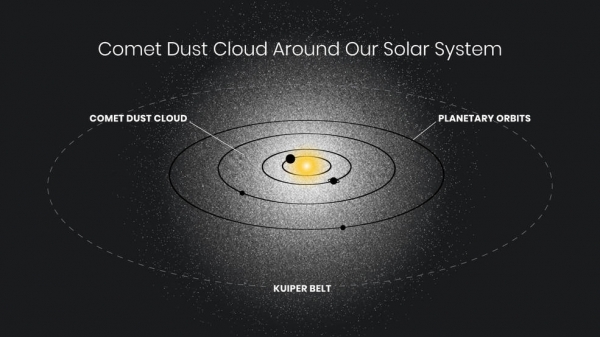The researchers say that one possible explanation for this residual glow is that our inner solar system contains a tenuous sphere of dust from comets that are falling into the solar system from all directions, and that the glow is sunlight reflecting off this dust. If real, this dust shell could be a new addition to the known architecture of the solar system.
This idea is bolstered by the fact that in 2021 another team of astronomers used data from NASA's New Horizons spacecraft to also measure the sky background. New Horizons flew by Pluto in 2015, and a small Kuiper belt object in 2018, and is now heading into interstellar space. The New Horizons measurements were done at a distance of 4 billion to 5 billion miles from the Sun. This is well outside the realm of the planets and asteroids where there is no contamination from interplanetary dust.
New Horizons detected something a bit fainter that is apparently from a more distant source than Hubble detected. The source of the background light seen by New Horizons also remains unexplained. There are numerous theories ranging from the decay of dark matter to a huge unseen population of remote galaxies.
Read More: NASA Goddard Space Flight Center
This artist's illustration shows the location and size of a hypothetical cloud of dust surrounding our solar system. Astronomers searched through 200,000 images and made tens of thousands of measurements from Hubble Space Telescope to discover a residual background glow in the sky. Because the glow is so smoothly distributed, the likely source is innumerable comets – free-flying dusty snowballs of ice. They fall in toward the Sun from all different directions, spewing out an exhaust of dust as the ices sublimate due to heat from the Sun. If real, this would be a newly discovered architectural element of the solar system. (Photo Credit: NASA, ESA, and Andi James (STScI))


